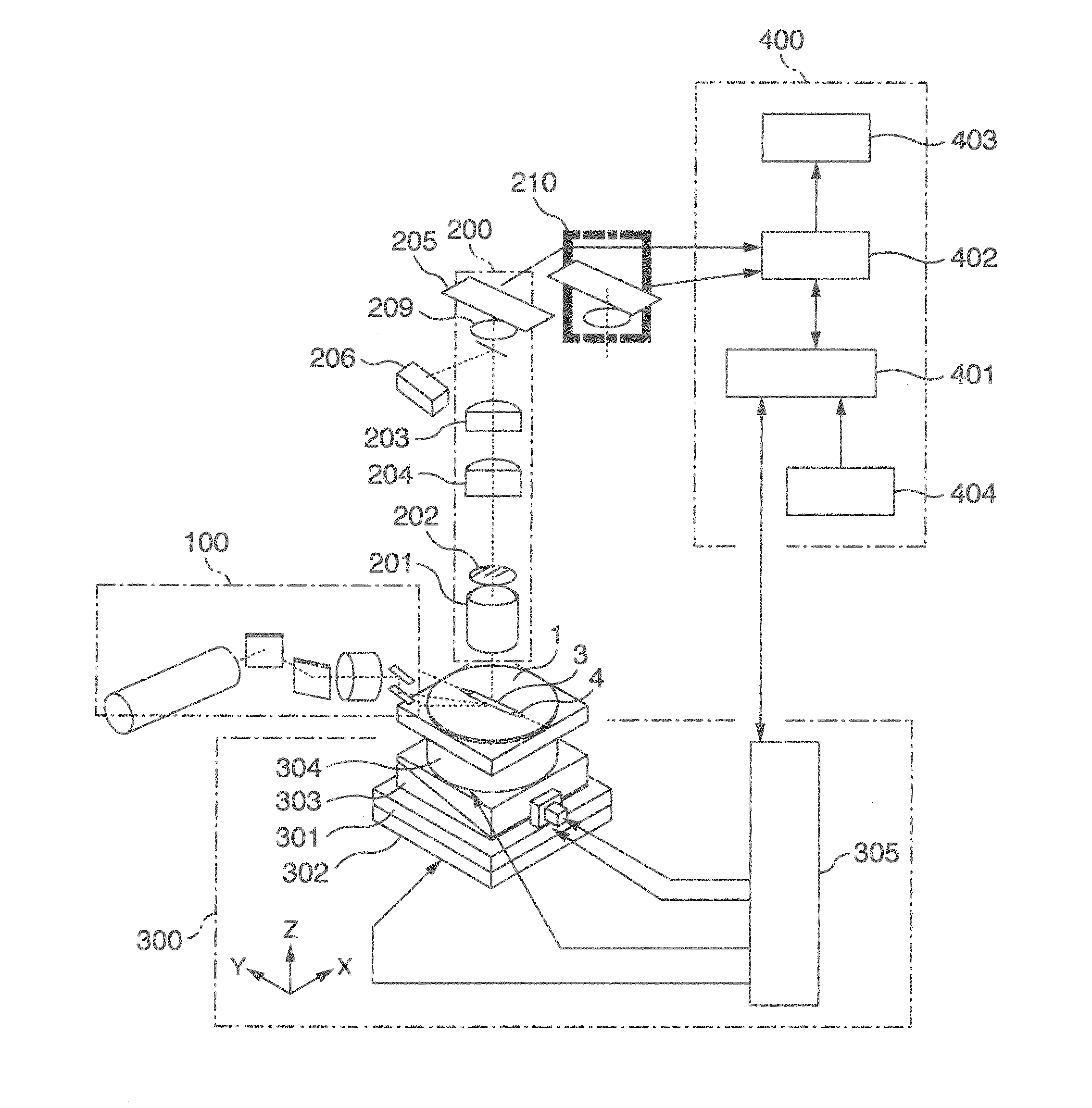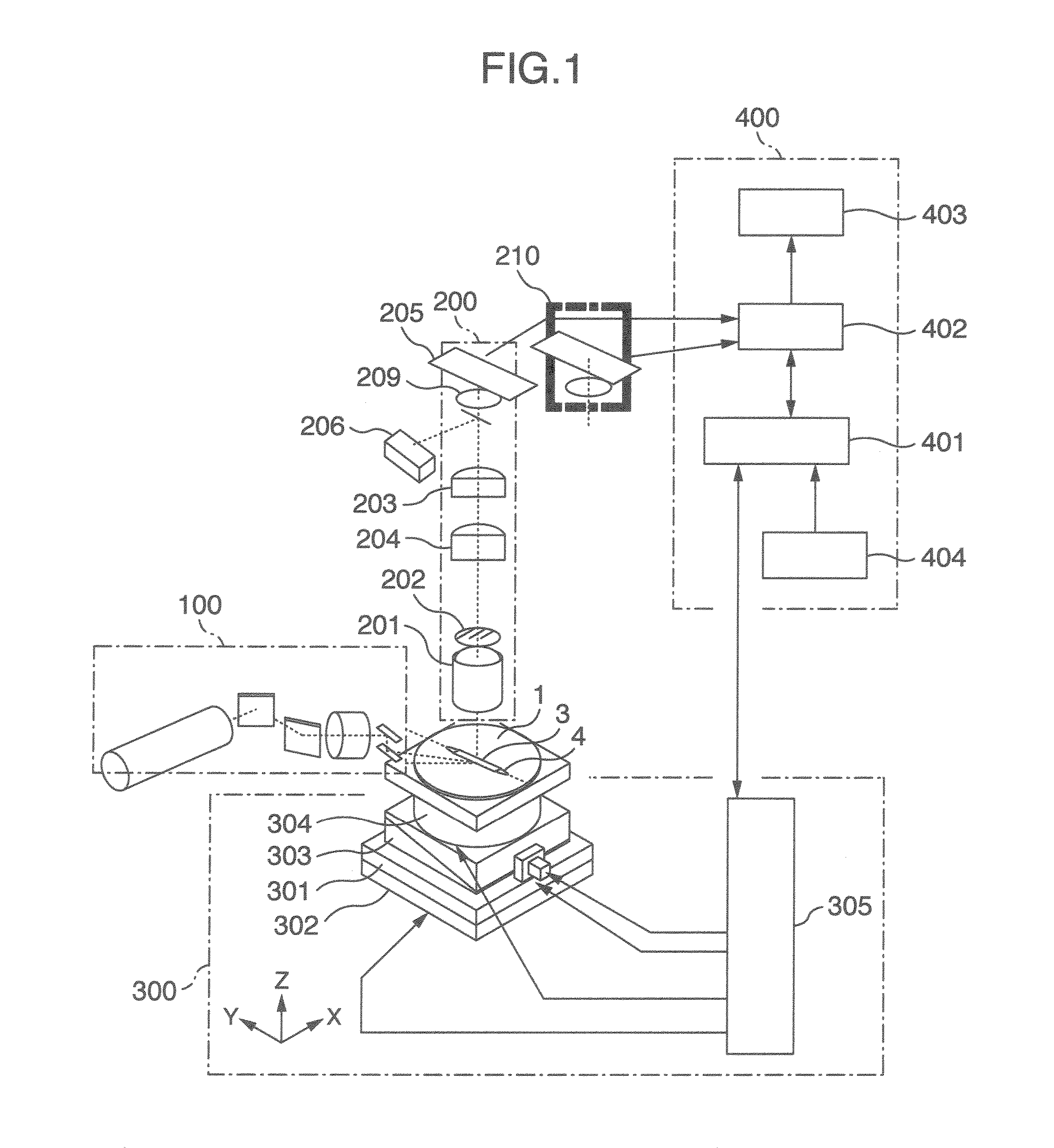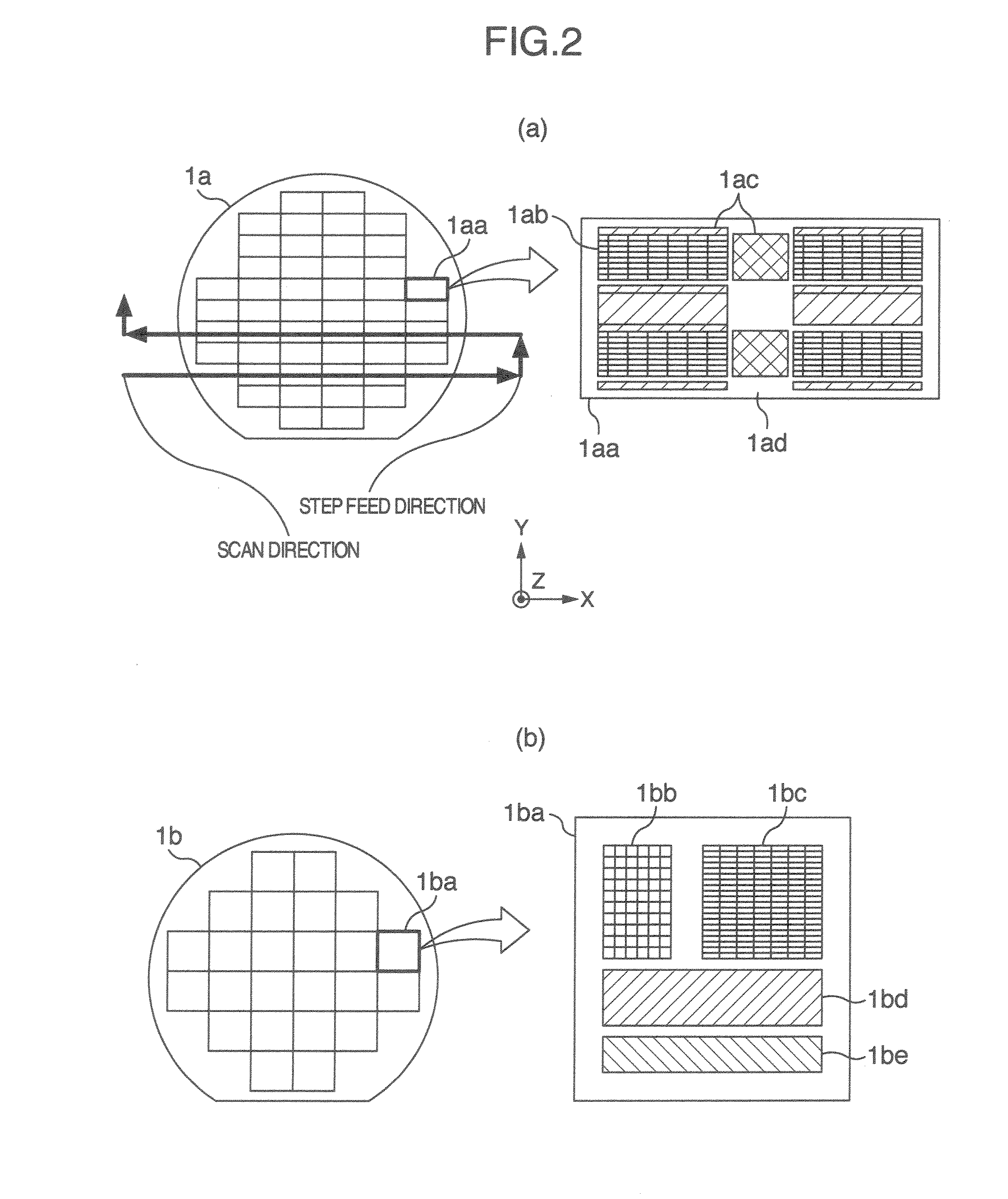Defect inspection method, and defect inspection device
- Summary
- Abstract
- Description
- Claims
- Application Information
AI Technical Summary
Benefits of technology
Problems solved by technology
Method used
Image
Examples
first embodiment
[0054]Referring to FIG. 6, a first embodiment of the oblique inspection according to this invention will be described. An object of this embodiment is to realize a system characterized with an oblique inspection using an overhead detection optic system in order to detect defects on a substrate to be inspected 1 with light.
[0055]A planar reflection mirror 501 is disposed between a detection lens 201 and a substrate to be inspected 1. The planar reflection mirror 501 reflects oblique scattered light obtained from an image sensor detection area 4 on the substrate to be inspected 1. The scattered light reflected by the planar reflection mirror 501 is imaged onto an image sensor 205 by the detection optic system. To this end the reflecting surface of the planar reflection mirror is arranged parallel to a pixel direction (longitudinal direction) of the image sensor and inclined to an optical axis of the detection lens. The detection area 4 of the image sensor does not need to match with t...
second embodiment
[0064]Referring to FIG. 7, a second embodiment of the oblique inspection according to this invention will be explained. The object of this embodiment is to realize a method capable of the overhead inspection and the oblique inspection without changing the stage height as is done in the first embodiment, by setting the stage height of the detection optic system during the overhead inspection and the stage height during the oblique inspection equal or nearly equal and making the focus height of the auto-focus system follow within a pull-in range. For this purpose, it is preferred that an optical path length correction element 503 be disposed between the planar reflection mirror (in this example, a reflecting surface 506 of the optical path length correction element 503) and the detection optic system 200 to extend the optical path length from the inspection area in the substrate to be inspected 1 to the detection lens 201. The optical path length can be extended by as much as (1-1 / ref...
third embodiment
[0067]Referring to FIG. 8, a third embodiment of the oblique inspection according to this invention will be described. The object of this embodiment is to realize a method capable of the overhead inspection and the oblique inspection without changing the stage height by setting the stage height during the overhead inspection and the stage height during the oblique inspection equal using the detection optic system and making the focus height of the auto-focus system follow within a pull-in range. For this purpose, it is desired that an optical path length correction element 504 or 505 be disposed between the planar reflection mirror 501 and the detection optic system 200 to extend the optical path length. The optical path length can be extended by as much as (1-1 / refractive index) times the optical path length passing through the correction element. FIG. 8 shows a construction in which two planar reflection mirrors 501 set at different angles, designed to direct scattered lights with...
PUM
 Login to View More
Login to View More Abstract
Description
Claims
Application Information
 Login to View More
Login to View More - R&D
- Intellectual Property
- Life Sciences
- Materials
- Tech Scout
- Unparalleled Data Quality
- Higher Quality Content
- 60% Fewer Hallucinations
Browse by: Latest US Patents, China's latest patents, Technical Efficacy Thesaurus, Application Domain, Technology Topic, Popular Technical Reports.
© 2025 PatSnap. All rights reserved.Legal|Privacy policy|Modern Slavery Act Transparency Statement|Sitemap|About US| Contact US: help@patsnap.com



